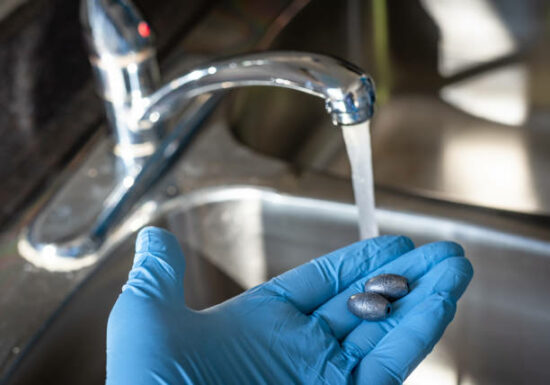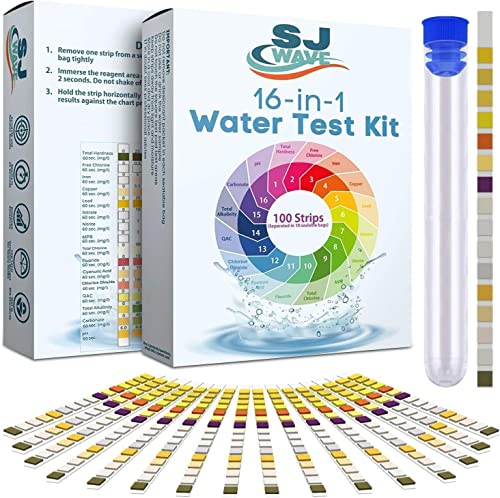Are you concerned about the lead levels in your drinking water? Are you looking for a simple, cost-effective solution to reduce lead exposure?
Table Of Contents
−- Does Brita Filter Remove Lead?
- What is Lead?
- How Does Lead Get Into Drinking Water?
- Risks Associated With Lead in Drinking Water
- How Does a Brita Filter Remove Lead?
- How to Test Your Water for Lead
- Comparing Brita and Other Filters to Remove Lead
- How to Clean a Brita Filter to Maximize Lead Removal
- Tips For Reducing Lead Exposure in Your Home
If so, then this blog post is for you! We’ll explore the Brita filter and whether it can help reduce lead levels in your water.

Does Brita Filter Remove Lead?
Brita is one of the most popular water filter brands, and many people trust it to make their water taste better and healthier. But does a Brita filter remove lead? The answer is yes!
Brita water filters are designed to reduce lead levels in drinking water by reducing the amount of lead that enters the water supply.
The Brita Longlast+ and faucet filters use a non-woven, coconut-based activated carbon filter certified to reduce chlorine (taste and odor), lead, and copper from drinking water. Brita’s Standard Filter does not remove lead but does reduce chlorine (taste and odor).
Studies have shown that Brita filters can remove up to 99.5% of lead from drinking water. This is higher than the market leader, which only removed 73.8% of the lead.
Brita, Pur, and Great Value all filtered out about 90 percent of the lead when comparing Brita with other filters. However, the filtered water would still contain more lead than the EPA’s maximum contaminant level of 15 parts per billion.
It’s important to note that Brita filters are not a substitute for professional testing. If you are concerned that your drinking water could contain lead, you should have it tested by a professional. However, if you want to reduce the amount of lead in your drinking water, a Brita filter can be an effective way to do so.
What is Lead?
Lead is a naturally occurring metal in soil, air, and water. It is also used in many industrial and consumer products, including paints, gasoline, and plumbing materials.
Lead can be highly toxic and cause serious health problems, especially in children and pregnant women. Exposure to even small amounts of lead can have long-lasting impacts on health, so it is important to be aware of the risks.
Fortunately, a Brita filter can help reduce lead levels in drinking water.
How Does Lead Get Into Drinking Water?
Lead can enter drinking water through a variety of sources. It can naturally occur in some areas or enter the water by corrosion of older pipes and fixtures.
It can also be found in industrial and agricultural runoff or lead-containing materials used in plumbing systems. Lead can be dangerous if ingested, so it’s important to know what’s in your drinking water and how to reduce exposure to it.
Risks Associated With Lead in Drinking Water
Lead is a toxic metal that can be highly hazardous to human health. It can cause various health issues, including brain and nervous system damage, learning and behavior problems, reproductive issues, and even cancer.
Lead poisoning can happen when a lead is ingested, inhaled, or absorbed through the skin. When it comes to drinking water, lead can be ingested when it enters the water supply.
Therefore, it is important to reduce your exposure risk by using a filter capable of removing lead from drinking water.
Brita filters have been certified to reduce a range of contaminants, including chlorine, lead, and copper, which can make tap water taste better and be safer to drink.
Specifically, Brita’s faucet systems and new Longlast+ filters are designed to remove up to 99% of lead from water. Brita Standard and Stream pitcher filters are not designed to remove lead from drinking water. This means it is important to choose the right Brita filter for the job to ensure you get the best lead removal possible.
How Does a Brita Filter Remove Lead?
Brita filters use a combination of mechanical and chemical processes to remove lead and other contaminants from drinking water. The mechanical process uses a non-woven material to trap particles such as sediment, rust, and dirt.
The chemical process uses activated carbon to reduce chlorine and other chemicals. Activated carbon has a large surface area and absorbs lead molecules from the water, trapping them in the filter. Brita filters are certified to meet NSF/ANSI Standard 53, which means they can reduce up to 99.5% of lead in drinking water.
How to Test Your Water for Lead
Testing your water for lead is essential to know if your drinking water is safe. There are a few ways to test for lead in your water, including using a home test kit or having a professional test done. If you use a home test kit, follow the instructions and use the test strips provided.
You can also have a professional test to ensure your water is safe. This will give you an accurate and comprehensive reading of the lead levels in your water. Once you know the levels, you can determine if your Brita filter is working properly and removing enough lead.
Comparing Brita and Other Filters to Remove Lead
When it comes to removing lead from your drinking water, Brita filters are among the best. The Brita Longlast+ filter is the only model certified to reduce up to 99% of lead, and it utilizes a non-woven activated carbon filter to do so. Other Brita models, such as the Standard and Stream pitcher filters, do not effectively reduce lead levels.
Compared to other popular brands, Brita does a good job removing leads. The Brita Standard Filter removed 73.8% of lead, while Pur and Great Value filters removed around 90%. However, even with a filter, the water may still contain more lead than the EPA recommends, so it’s important to test your water to ensure it meets safety standards.
How to Clean a Brita Filter to Maximize Lead Removal
To ensure maximum lead removal from your drinking water, it’s important to clean your Brita filter regularly. Doing so will help remove accumulated contaminants and allow the filter to work its best. Fortunately, cleaning your Brita filter is relatively easy and only requires a few simple steps.
First, you’ll need to remove the filter from your Brita system and discard any used water. Once the used filter has been removed, you can begin cleaning. Start by rinsing the filter with cold water to remove loose dirt or debris. After rinsing, gently scrub the filter with a mild detergent and brush. If you notice any hard-to-reach areas, use a toothpick or other small tool to clean them out.
Once the filter has been scrubbed, rinse it with cold water and allow it to air dry. This will ensure that all the detergent has been removed from the filter and will also help reduce any unpleasant odors. After the filter is completely dry, it’s ready to be reinserted into your Brita system and will once again begin to remove lead from your drinking water effectively.
Tips For Reducing Lead Exposure in Your Home
Lead exposure can be minimized through a combination of preventive and remedial measures. Some of the tips you can use to reduce lead exposure in your home include:
- Test your water supply for lead. You can test your water supply for lead using an at-home testing kit. This will help you determine the extent of contamination and take steps to reduce your exposure.
- Use a Brita filter. Brita filters are the most effective way to reduce lead in your drinking water. The Longlast+ filter removes over 99.5% of lead from your drinking water.
- Run the tap for a few minutes before using it. Running the tap for a few minutes before using it helps flush out any lead that may have built up in your pipes.
- Replace any old plumbing fixtures. If your plumbing fixtures are more than 20 years old, they may contain lead. Replacing them with lead-free fixtures will help reduce exposure.
- Avoid using hot water for drinking and cooking. Hot water is more likely to contain higher levels of lead than cold water.
By following these tips, you can reduce your exposure to lead and ensure that your drinking water is safe.

Jay
Jay is a health and wellness enthusiast with expertise in water quality and nutrition. As a knowledgeable advocate for holistic well-being, Jay successfully manages Type 2 Diabetes through informed lifestyle choices. Committed to sharing reliable and authoritative insights, Jay combines firsthand experience with a passion for enhancing health."





